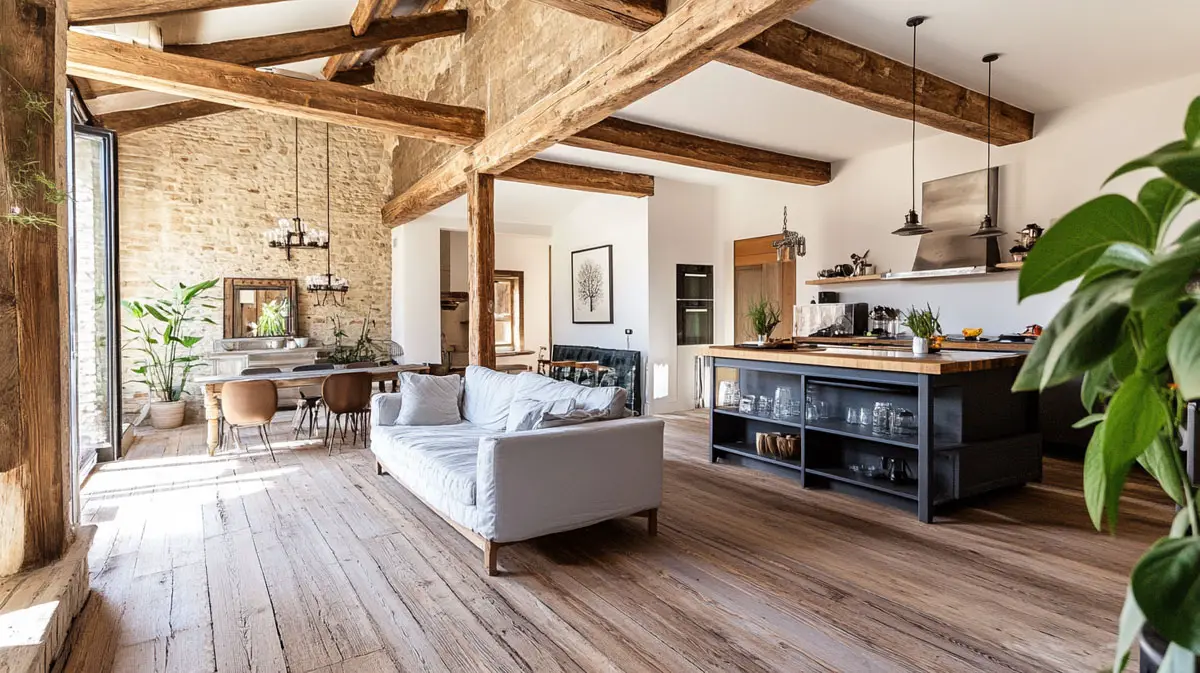Defining A Beautiful Rural Household As Your Own: A Guide

It’s quite clear that whenever we move into a household, no matter its prior owners or those to come in future, we consider it our own. Quite rightly too, you’re living there after all. However, it’s also true that sometimes this requires action. You may have to remove some of the ghastly renovation or design decisions of the previous owner. Perhaps if the last owner was unable to maintain the household as they would have liked, such as an elderly individual not quite having the mobility to attend to the attic anymore, then restorations could take work also.
But there’s also the added variable of a home’s character. By and large, it will be determined for you. You may have purchased a household based on the strength of its character, after all, such as the gorgeous wooden beams that are hundreds of years old. In rural properties, the age tends to be a more common characteristic. Yet defining a beautiful rural household as your own isn’t always about changing everything that’s there, but making small improvements and alterations that help the space feel more like your own.
In this post, we’ll discuss how to achieve that more readily:
Border Fencing
Older rural properties can easily be without any kind of property demarcations even if the lines are of course listed in the property deed, but that doesn’t mean you shouldn’t implement a fence or border if it’s important to you.
Sometimes you can gently restore what might have been there, such as old stone walls with wildflowers peeking through the cracks that might have stood for centuries, each stone placed by someone long ago. If you can keep up the weathered look of aged fencing, it seems to belong in the rural landscape in a way that brand-new materials sometimes don’t.
.
However, you can still implement something new, and you might find yourself drawn to wooden post and rail fencing if you’re starting fresh. If you have parts of your property that back onto fields or woodland, sometimes the gentlest approach works best, as there may be a stream or row of trees that aren’t quite the extent of your property, but can be a nice visual border you use anyway.
Property Names & Signing
A unique property name gives a home some personality, especially in the countryside where names often stick for generations and may suggest exactly what the house was before you moved in, such as a forge or a mill. If the house already has one, keeping it can feel like a nod to its history, but if it doesn’t fit, there’s nothing wrong with choosing something that does. A name connected to the land, an old family name, or just something that sounds right when you say it out loud is fine, it’s your property after all, and you can apply for a name registry change within certain parameters, and as long as the building itself isn’t protected.
Then, you can enjoy the fun part, which is investing in great signage that helps reinforce that sense of identity. Wooden signs with deep engraving in English Oak, implemented with a special diamond coat finishing to ensure it lasts forever, and with a bespoke design that fits for your property would be fantastic. It shows you’re just not changing the name on a whim, but because you want it to last for the future.
Entrances & Exits
You may not wish to use a grand front entrance because the door is old or made from historical wood, and you’d rather make the side door the more functional space. As such, you have to tailor how you curate the property to make this obvious and to make visitors or those working understand your needs.
Consider the approach from both directions too, and how you use focal points to both welcome or increase privacy from certain sightlines. For instance, a carefully positioned specimen tree, perhaps one native to the area, can help you with a natural focal point. If the entrance feels too stark or exposed, you might plant a mixed native hedge that provides privacy without the artificial nature of a high fence.
For the entrance to the home itself, a simple porch light with a warm glow and leading to it gently with outdoor lights and a well-curated path can help. As rural properties may have quirks like this, you will have defined how your house is to be interacted with at its first moment.
Fixtures & Features
It’s good to respect original features where possible such as those we mentioned above, including exposed beams, fireplaces, window fixtures or any implementations that might showcase the quirks of a household built for another purpose, as these are the elements that give country properties their charm.
However, you can still stamp your own design without fighting against period quirks, by implementing smart choices to enhance them. For example, lime wash rather than modern paint on old walls, wooden shutters instead of plastic blinds and natural materials throughout will show that your household is still of quality and not of the general suburban residential design, but still be functional and useful for a modern family.
That’s not to say you can’t introduce modern comforts at all, such as underfloor heating that gives stone floors warmth when the tiles would have otherwise been freezing. In the same way you can still light with ambience and atmosphere. However, it’s about making little adjustments, such as brass taps instead of stainless steel if you have a motif running through the home. Of course, modern internal and rustic externals will still work, you just have to make the theming choice to do so.
With this advice, you’ll see that making your rural home feel like yours isn’t about big alterations that you feel you need to implement, but smart little adjustments that show a respect for the home. If you honor what’s already great about the place while adding your own stamp, and you’ll end up with a space that respects its roots but feels completely yours too.










